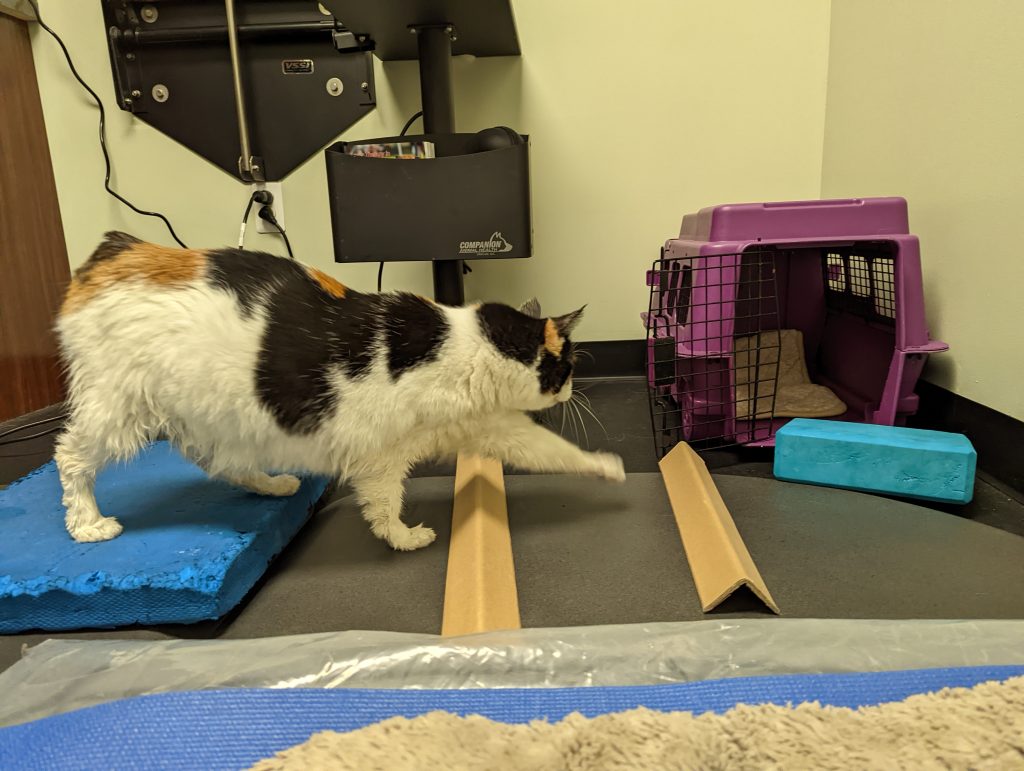Feline Physiotherapy
by Colleen Lum LVT, CCRVN, CCFT
Cats can be challenging to get to engage in their rehabilitation programs. Unlike their canine counterparts, they are not always so easily motivated by food, toys or praise. Honestly, they seem like they could care less about our plans or rehab goals, staring at us with judgmental gazes. So how do we rehab cats?
Kill It!
If our cat patients are motivated by killing quick moving creatures, the use of dangly toys against a wall may work well for encouraging them to reach up and extend their hind limbs. With them in a sit trying to swat at the toy, it can encourage core and hind limb stabilizer engagement as well as forelimb extension and overall balance. Luring walking around an object will also engage spinal flexors, balance and shifting weight from one side of the body to the other.
Something to Cleanse the Palate
Churu treats, cheese or even tuna fish may be enticing enough for some feline foodies. Luring using soft, liquidy treats to sit and stand can work the flexors and extensors of the hind limbs or keep them still long enough to perform some weight shifting on balance equipment or a small throw pillow.
Lover not a Fighter
Perfectly placed petting can also be utilized. Crossing over from one side of the bed to the other to get some loving from mom or dad is a great exercise for balance, weight shifting and even increased flexion in all limbs if you have a particularly comfy or thick comforter. Even when sitting in an arm chair with your kitty standing or loafing on your lap, you can scratch over their ears to encourage a natural weight shift as they lean into a good spot. Or follow your hand in a figure 8 pattern in front of your arm chair.

Something A Little Stronger
Cat nip strategically placed in small amounts can lure in patients looking for a feel good fix. However, too large of an amount may back fire.
Get to the Escape Pod!

If our cat patients are motivated by a means of escape from their incompetent captors, placing the carrier at the end of a sequence of obstacles can encourage them to walk over for a challenge in proprioception, balance as well as flexor and core strength.
